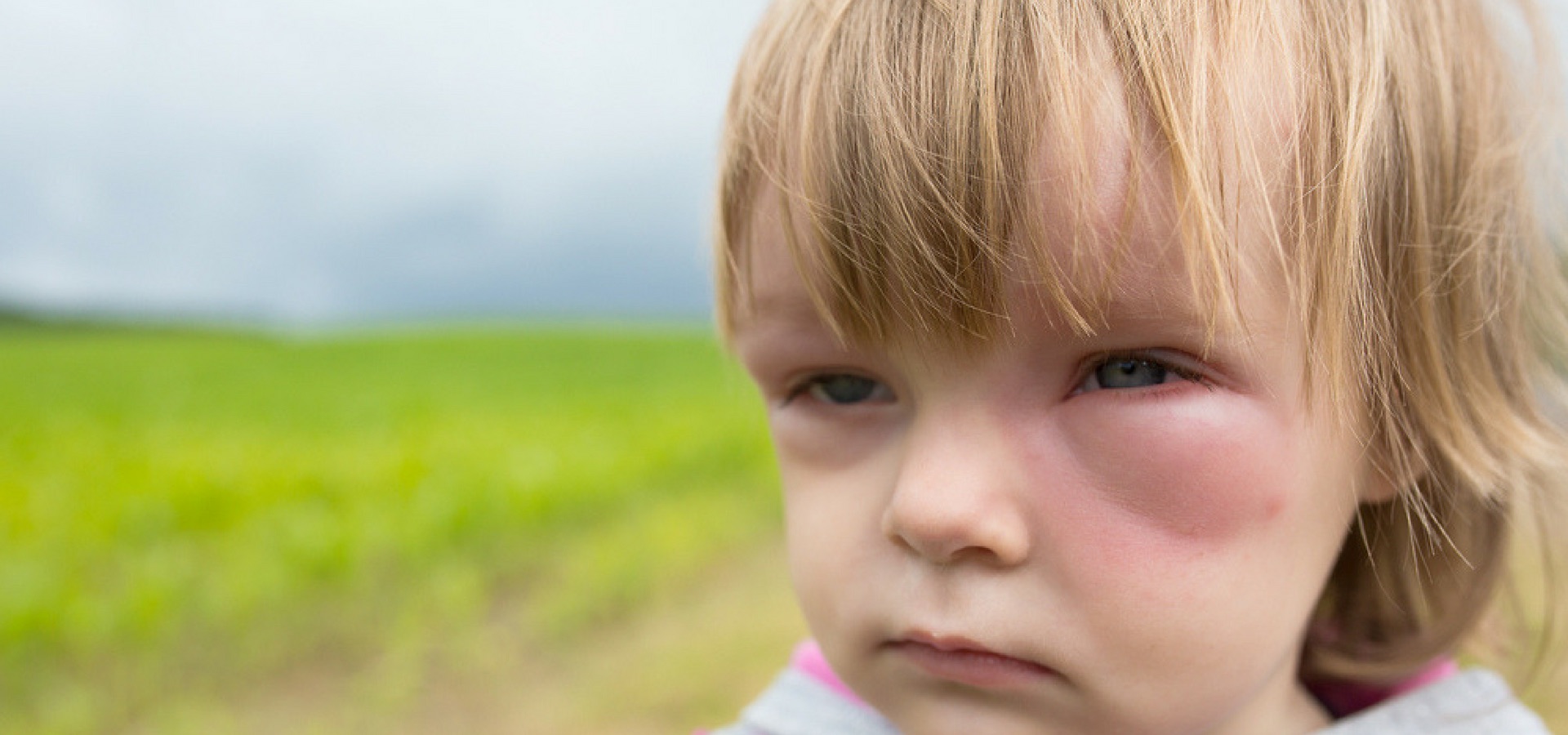Spring is set to arrive soon and what a wonderful time of the year it is, unless, of course, you’re the parent of a child plagued with allergy symptoms that are exacerbated at this time of the year. Seasonal allergies, commonly known as hay fever, are caused by pollens from trees and grasses or airborne mould spores. Symptoms include sneezing, itching of the nose and mouth, red, watery and itchy eyes and a consistently thin and clear discharge from the nose that may also become blocked. However year-round allergies to house dust, animal dander, feathers, mites and chemicals may also be troubling your child. And then, of course, there are food allergies.
In infants the first symptom of a food allergy may be a rash such as eczema (atopic dermatitis) or a rash that resembles hives. This may be accompanied by colic, nausea, vomiting and diarrhoea. However food allergies in children can also contribute to chronic health problems, such as asthma, ear infections, fatigue, headache, irritability, chronic runny nose, acne, bedwetting and even difficulty maintaining concentration (attention deficit disorder, or hyperactivity). Dark circles under the eyes (called “allergic shiners”), along with a puffy look to the face, are frequently seen. (Cow’s milk is very often the culprit here). Allergic children often look wan or pallid and lack vitality. This is because food allergies can also cause digestive problems that interfere with the absorption of vitamins and minerals, no matter how nutritious the diet
In the presence of an allergen, a child’s built-in defence system releases histamines and similar chemicals to fight what it perceives as an invader. A string of reactions such as the swelling and congestion of nasal passages and increased mucous production results. Conventional medicine using prescription antihistamines, nasal sprays or decongestants, treats symptoms only. Many of these medications have nasty side-effects and if used consistently may lose their effect or rapidly produce dependency.
A Nutritional Therapy Approach To Treating Food Allergies
The most common foods that cause allergic reactions in children are wheat, dairy products, eggs, fish and seafood, chocolate, citrus fruits, soy products, corn, nuts, peanuts and berries. On the chemical list are additives such as artificial colourants, preservatives (e.g. benzoic acid), flavour enhancers (e.g. MSG) and sulphites found in some frozen foods, dried fruits and medications.
To identify what foods are making your child miserable use an elimination diet or keep a diary recording your child’s symptoms and the foods eaten. (Some children seem to be particularly drawn to a problematic food and actually crave it, so be wary if your child wants to live on peanut butter or wheat bread or dairy products). Simply eliminate the suspected food from the diet for a few weeks and watch for improvements. Eliminating all dairy products would be a good place to start. Dairy foods can stimulate an increase in mucous production. Rice, oats or goat’s milk are possible alternatives. If your child’s allergies are seasonal, it may also be helpful to avoid whole wheat during the allergy season. Good substitutes include buckwheat, corn/maize, rice, millet and quinoa.
If all the identified problem foods are eliminated from a child’s diet for at least 6 months and then introduced slowly one by one she should be able to tolerate small amounts of these foods.
What Else Can Help?
- Encourage your child to drink lots of water to thin secretions and ease expectoration.
- Allergic children need a good wholesome diet comprising mainly raw fruit and vegetables.
- Avoid giving your child any processed foods as they will contain some of the additives mentioned previously.
Nutritional Supplements That May Help
Vitamin C, preferably in mineral ascorbate form with bioflavonoids, is a natural anti-histamine and a powerful promoter of a strong immune system, making it the most important anti-allergy vitamin.
MSM (methylsuphonyl methane) is being prescribed more and more for its anti-allergenic properties.
Essential fatty acids, such as those found in fish oil help to regulate the inflammatory response.
Quercetin, a plant bioflavonoid naturally found in many fruits and vegetables, acts as anti-inflammatory agent and stabilises mast cells in allergy sufferers. Mast cells become unstable during an allergic reaction and release large quantities of histamine.
A high quality green whole food multivitamin and mineral supplement will ensure optimum intake of essential nutrients and sufficient digestive enzymes.
Ways To Prevent Allergies
In the past it was believed that it was essential to avoid sensitization of infants before birth and for the first three years of life and so moms were advised to reduce exposure of the foetus/infant to known food allergens. However despite this, food allergy in children has increased world wide. Now there is a new take based on “The Development of Oral Tolerance” whereby it is believed that by exposing an infant before and after birth to small quantities of foreign proteins, the child’s immune system is stimulated to produce anti-bodies. Mothers are now encouraged to eat a wide range of foods during pregnancy, so that small amounts of all kinds of proteins can cross the placenta to sensitize the foetus. Mothers should also breastfeed for at least 4 months while eating a wide range of different foods. For infants that cannot be breastfed, hydrolysed infant formulas and goat’s milk formulas are a safer option than soy-based formulas. Soya is a well-known allergen which can cause as many allergic reactions as cow’s milk.
Holding back on solid foods until baby is 5 months old is still recommended and using only one solid food at a time in small portions (1 teaspoon a day) to keep track of any adverse reactions.
The latest research also suggests that pregnant women would do well to take supplemental probiotics every day for a few weeks before their due dates and while breast-feeding as this may help prevent childhood allergies. Bottle-fed and caesarian-section infants ought to be given probiotics orally from birth.
Encouragingly most children, except those suffering from peanut allergy, outgrow their allergic response. Statistics show that 25% of infants are free of symptoms after 1 year and that practically all children outgrow their milk allergy by the age of 3 years.
- Enhance Your Child’s Potential - April 6, 2022
- Childhood Allergies - May 24, 2017
- Do Sunscreens Really Prevent Skin Cancers? - October 22, 2014





